Life
The son of a bridge construction engineer, Steffens was born in Aachen-Burtscheid and grew up in Dortmund. His road to music was a bumpy one, especially since his father could not imagine a career in the fine arts as being a respectable way to earn a living. During the Second World War the Ruhrgebiet was being increasingly bombed, and at the age of eight, young Walter was sent, within the Kinderlandverschickung programme — the evacuation of children from war zones to the countryside — to the village of Wollenberg in Baden-Württemberg, and was thus separated from his parents and sister. By the end of the war, the 10-year-old had found a home with his grandparents in Bad Pyrmont.
When the family was re-united again and the family's piano, which had been stored safely in the Sauerland during the war, was returned to their home, the young boy was allowed to accompany his father while singing. Walter was given his first music lessons by a woman from the neighborhood. He received his basic musical education from the music director Max Spindler in Dortmund, and this was supplemented by conducting lessons with Rolf Agop, at the Dortmund Conservatory. In Hamburg he studied composition under Ernst-Gernot Klussmann and the Busoni-pupil Philipp Jarnach as well as music theory under Wilhelm Maler. "I was only able to convince my father about my plans for a musical career after I had finished my school leaving examinations in Münster and passed the entrance examinations for the Hamburg University of Music in 1959", Steffens recalls. He began his teaching career in 1962 at the Hamburg Conservatory.
Eli , Op. 7, after the mystery play by Nelly Sachs, which premiered under the direction of Wilhelm Schüchter in 1967, was commissioned by the City of Dortmund on the occasion of the opening of its new opera house. Under Milk Wood, Op. 14 (Unter dem Milchwald, 1972), based on the "play for voices" by Dylan Thomas, premiered at the Hamburg State Opera in 1973 and staged again by Staatstheater Kassel in 1977 on the occasion of the opening of the documenta 7. His other operas include Der Philosoph, Op. 57 (The Philosopher, Landestheater Detmold 1990), Die Judenbuche, Op. 65 (The Jew's Beech, Opernhaus Dortmund 1992), based on a novel by Annette von Droste-Hülshoff, and Two Cells in Sevilla, Op. 106 on a libretto by his son Marec Béla Steffens (Greenbriar Consortium Houston and Round Top Theatre Forum 2016, on CD: Navona Records 2018).
Steffens has composed numerous works based on paintings (more than 100 single paintings), e.g., Vier Aquarelle nach Paul Klee, Op. 63 (Four Watercolors after Paul Klee). "Mixed concordant working process" (Steffens) is based on the composer's own eight-note scale, with scale-related sound patterns. Impressions of his childhood during the war years and his sadness and grief at all the death and destruction were dealt with by Steffens in his composition Guernica, Op. 32, after the painting by Pablo Picasso. He has received awards from Hamburg, Berlin, and Paris (Cité des Arts).
Compositions
Steffens has noted one essential feature of his musical creativity: "There is always an extra-musical stimulus which has a very intense effect on me, more intense even than only a music-related sensation." He frequently uses literary sources for his compositions—for example works by Nelly Sachs, Ingeborg Bachmann, Clemens Brentano, Dylan Thomas, Federico García Lorca, Friedrich Hölderlin, Juan Ramón Jiménez, Ezra Pound, or Arthur Rimbaud.
"Following the text closely and interpreting it musically, I put it into sounds," Steffens says of his compositional work with literary texts. As an opera composer he tells stories, he experiences, senses, and feels pictorially and in terms of stage settings. In his work with texts by Nelly Sachs he was especially fascinated by the sophistication of her language. Then, when he heard Eli' performed as a radio drama, the message of this mystery play about the suffering of the Jews elicited a deep sense of distress in him. After having visited the author in Stockholm, and after contact with her over period of time, Steffens began working on the libretto himself. The musical expressiveness of this scenic oratorium has been stringently oriented around the text, to pay tribute to the seriousness of the subject matter. In the book Nelly Sachs zu Ehren (In Honor of Nelly Sachs) Steffens gives an account of his work on this opera.
While composing, Steffens maintains an intimate relationship to the instruments and voices he uses. He is intent on projecting "the unalienated sounds of instruments and the human voice in the pure form they have evolved towards over long periods of cultural development and implementation." His own individual system of notation mediates between tonality and atonality, which he says opens up a creative domain "providing for sounds, lines, colors and forms which serve to sensually enhance a desired expression." His style has progressed from an atonal phase, when he was working on the opera Eli and "was unable to endure smiling," to a language of sounds which enable him to express and convey sensibilities, to "make them singable." While Steffens’ occupation with this work by Sachs expanded his spectrum of compositional expression, especially with respect to dramatic components, he considered his second opera Under Milk Wood to be "an opportunity to concentrate on the configuration of comic parts within a basically lyrical style."
In addition to literature, the visual arts also provide Steffens with important sources of inspiration. The book Vom Klang der Bilder, published on the occasion of the exhibition of the same name in the Staatsgalerie Stuttgart from 6 July to 22 September 1985, has an appendix with a list of paintings set to music by Steffens and other composers. Steffens’ orchestral work Guernica, after the painting by Picasso, is a timeless indictment of the terrors of war and violence, expressed in music. The initial silence at the beginning of the work gradually takes on elements of sound, swelling towards a sonorous crescendo, an ominous audio-pictorial intimation of the approaching fighter-bombers, before the viola intones its elegiac theme. Because of its graphic qualities, the score pages of Guernica were included in the 1986 exhibition Linien, Briefe, Notationen (Lines, Letters, Notations) at the Städtischen Galerie Lüdenscheid. The pictures of Ju 52 bombers incorporated into the score, together with the inclusion of background sounds of "extreme brutality," transpose traumatic experiences into visual impressions. In the afterword to the score Steffens writes,
As a child I lived through bombing raids on Dortmund, the menacing drone of bomber formations and the jarring terror of low-level strafing attacks. I know well the patterns of horror in La muerte de Guernica by Pablo Picasso and the poem La Victoire de Guernica by Paul Éluard. In my Elegy for Viola and Orchestra I have tried to recreate in my imagination that haunting feeling—fear, terror, and grief—and to put that all into my music. The suffering is universal and timeless, and so I have acted pluralistically: Everything I could find of historical importance was integrated into the work, to portray the dramatic sense of terror, fear, chaos, hopelessness, sadness and hope.
The musicologist Monika Fink, who has been pursuing the topic of her doctoral thesis Musik nach Bildern (Music after Pictures) for over three decades, writes that she knows of no other composer who has so intensively and consistently dedicated himself to setting pictorial images to music. Under the supervision of Fink a project was initiated at the Department of Music at the University of Innsbruck to develop and maintain a comprehensive website devoted to the subject area “Music after Pictures” (see Musik nach Bildern ). Numerous works by Steffens, especially those from recent years, are listed in this database, e.g., musical compositions on pictures by Peter Paul Rubens, Rembrandt van Rijn, and Emil Schumacher.
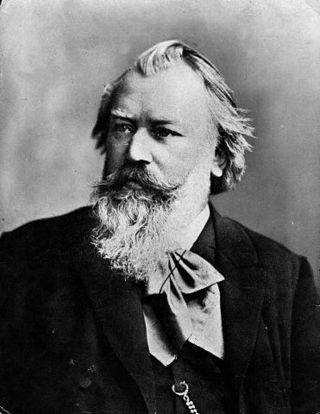
Johannes Brahms was a German composer, pianist, and conductor of the mid-Romantic period. Born in Hamburg into a Lutheran family, he spent much of his professional life in Vienna. He is sometimes grouped with Johann Sebastian Bach and Ludwig van Beethoven as one of the "Three Bs" of music, a comment originally made by the nineteenth-century conductor Hans von Bülow.

Morton Feldman was an American composer. A major figure in 20th-century classical music, Feldman was a pioneer of indeterminate music, a development associated with the experimental New York School of composers also including John Cage, Christian Wolff, and Earle Brown. Feldman's works are characterized by notational innovations that he developed to create his characteristic sound: rhythms that seem to be free and floating, pitch shadings that seem softly unfocused, a generally quiet and slowly evolving music, and recurring asymmetric patterns. His later works, after 1977, also explore extremes of duration.
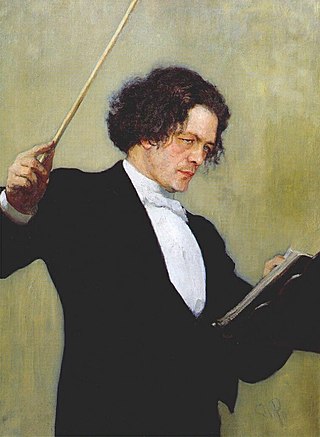
Anton Grigoryevich Rubinstein was a Russian pianist, composer and conductor who became a pivotal figure in Russian culture when he founded the Saint Petersburg Conservatory. He was the elder brother of Nikolai Rubinstein, who founded the Moscow Conservatory.

Helmut Friedrich Lachenmann is a German composer of contemporary classical music. His work has been associated with "instrumental musique concrète".

Nelly Sachs was a German–Swedish poet and playwright. Her experiences resulting from the rise of the Nazis in World War II Europe transformed her into a poignant spokesperson for the grief and yearnings of her fellow Jews. Her best-known play is Eli: Ein Mysterienspiel vom Leiden Israels (1950); other works include the poems "Zeichen im Sand" (1962), "Verzauberung" (1970), and the collections of poetry In den Wohnungen des Todes (1947), Flucht und Verwandlung (1959), Fahrt ins Staublose (1961), and Suche nach Lebenden (1971). She was awarded the 1966 Nobel Prize in Literature.
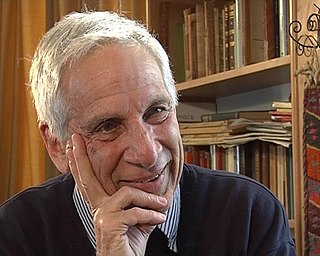
Peter Alexander Goehr is an English composer and academic.

Isang Yun, or Yun I-sang, was a Korean-born composer who made his later career in West Germany.

Guernica is a large 1937 oil painting by Spanish artist Pablo Picasso. It is one of his best-known works, regarded by many art critics as the most moving and powerful anti-war painting in history. It is exhibited in the Museo Reina Sofía in Madrid.

AntonJoseph Reicha (Rejcha) was a Czech-born, Bavarian-educated, later naturalized French composer and music theorist. A contemporary and lifelong friend of Beethoven, he is now best remembered for his substantial early contributions to the wind quintet literature and his role as teacher of pupils including Franz Liszt, Hector Berlioz and César Franck. He was also an accomplished theorist, and wrote several treatises on various aspects of composition. Some of his theoretical work dealt with experimental methods of composition, which he applied in a variety of works such as fugues and études for piano and string quartet.

Marie-Thérèse Walter was a French model and lover of Pablo Picasso from 1927 to about 1935 and the mother of their daughter Maya Widmaier-Picasso. Their relationship began when she was seventeen years old; he was 45 and married to his first wife, Olga Khokhlova. It ended after Picasso moved on to his next relationship, with artist Dora Maar. Walter is known as Picasso's "golden muse" and inspired numerous artworks and sculptures that he created of her during their relationship.

Friedelind Wagner was the elder daughter of German opera composer Siegfried Wagner and his English wife Winifred Williams and the granddaughter of the composer Richard Wagner. She was also the great-granddaughter of the composer Franz Liszt.
Michael Denhoff is a German composer and cellist.

The Weeping Woman is a series of oil on canvas paintings by Pablo Picasso, the last of which was created in late 1937. The paintings depict Dora Maar, Picasso's mistress and muse. The Weeping Woman paintings were produced by Picasso in response to the bombing of Guernica in the Spanish Civil War and are closely associated with the iconography in his painting Guernica. Picasso was intrigued with the subject of the weeping woman, and revisited the theme numerous times that year. The last version, created on 26 October 1937, was the most elaborate of the series, and has been housed in the collection of the Tate Modern in London since 1987. Another Weeping Woman painting created on 18 October 1937 is housed at the National Gallery of Victoria and was involved in a high-profile political art theft.
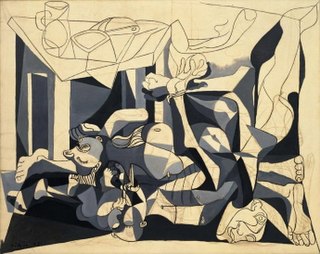
The Charnel House is an unfinished 1944–1945 oil and charcoal on canvas painting by Spanish artist Pablo Picasso, which is purported to deal with the Nazi genocide of the Holocaust. The black and white 'grisaille' composition centres on a massed pile of corpses and was based primarily upon film and photographs of a slaughtered family during the Spanish Civil War. It is considered to be the second of three major anti-war Picassos, preceded by Guernica in 1937 and succeeded by Massacre in Korea in 1951. The painting is housed in the Museum of Modern Art in New York City.

Wilhelm Schüchter was a German conductor. He was Generalmusikdirektor in Dortmund from 1962 until his death. He opened the new opera house in 1966 with Der Rosenkavalier by Richard Strauss, and conducted the world premiere of the opera Eli by Walter Steffens after the drama of Nelly Sachs in 1967. He left a legacy of opera recordings, especially of excerpts sung in German.

Theater Dortmund is a theatrical organization that produces operas, musicals, ballets, plays, and concerts in Dortmund, Germany. It was founded as the Stadttheater Dortmund in 1904. Supported by the German Government, the organization owns and operates several performance spaces.
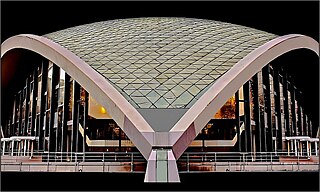
Opernhaus Dortmund is the opera house of Dortmund, Germany, operated by the Theater Dortmund organisation. A new opera house opened in 1966, replacing an earlier facility which opened in 1904 and was destroyed during World War II. It was built on the former site of the Old Synagogue, which was demolished by the Nazi local government in the 1930s.
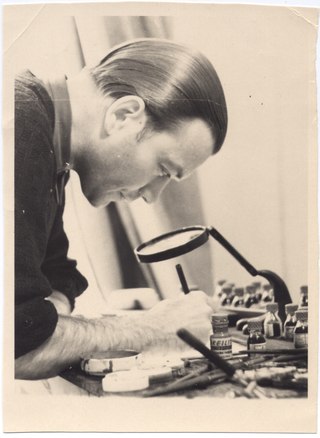
Hainer Hill was a German scenic designer, costume designer, painter, graphic artist and theatre photographer who was based in Berlin and worked internationally. After studying painting in Frankfurt, he worked at the Oper Frankfurt, assisting Caspar Neher. Together they moved to Brecht's Berliner Ensemble where Hill created an iconic stage for Mutter Courage and took hundreds of scene photographs now archived at the Akademie der Künste. When the Berlin Wall was erected, Hill, who lived in the West and had worked in the East, began to work freelance, including at the Royal Opera House. In 1966 he became director of scenery (Ausstattunggsleiter) at Opernhaus Dortmund, and there he created the stage for the world premiere of Eli by Walter Steffens, which was followed by 45 other productions. Hill is best remembered for his focus on light projection.
Eli, Op. 7, is a German-language opera in three acts with music by Walter Steffens to a libretto based on a play by Nelly Sachs. The world premiere was in 1967 at the Opernhaus Dortmund.

Femme au béret et à la robe quadrillée is an oil-on-canvas painting by Pablo Picasso, which he created in 1937. It is a portrait of Marie-Thérèse Walter, Picasso's lover and muse during this period and was created with elements of Cubism. The painting signifies a transition in their relationship by combining Walter's profile with that of Picasso's new lover, the Surrealist photographer Dora Maar, with whom he began a relationship in 1936. This portrait was produced in the same year as Guernica and The Weeping Woman, a significant phase in Picasso's artistic career. On 28 February 2018, it was sold at Sotheby's auction for £49.8 million, making it one of the most expensive paintings ever sold at an auction in Europe.


















